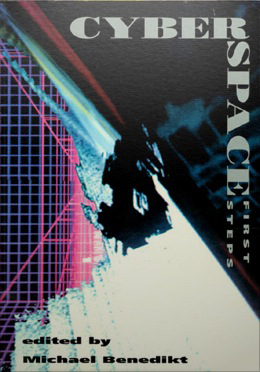 |
Cyberspace
First Steps
a cura di Michael L. Benedikt
446 pp. 52 ill.
MIT Press 1992 (out of print)
isbn 0-262-52177-6
|
| |
Cyberspace has been defined as "an infinite artificial world where humans navigate in information-based space" and as "the ultimate computer-human interface." However one defines it, this "virtual reality" is clearly both the strangest and most radically innovative of today's computer developments.
These original contributions take up the philosophical basis for cyberspace in ancient thought, the relevance of the body in virtual realities, basic communications principles for cyberspace, the coming dematerialization of architecture, the logic of graphic representation into the third dimension, the design of a noncentralized system for multiparticipant cyberspaces, the ramifications of cyberspace for future workplaces, and a great deal more. After Benedikt's "Introduction," William Gibson's "Academy Leader," a brief homage to William Burroughs, opens the book. This is symbolically accurate, given that many of the essays give central place of importance to Gibson's view of cyberspace.
Benedikt himself contributes an attempt to chart geometries of cyberspace. It is extraordinarily ambitious, abstract, and difficult, a combination of Euclid and Descartes for the emerging spatial domains of virtual reality. The book also provides excellent illustrations of hypothetical cyberspace databanks, the first attempts I have seen to implement seriously Gibson's descriptions of cyberspace as information contained in abstract forms. Benedikt's long piece discusses some, Marcus Novak's "Liquid Architectures in Cyberspace" discusses others.
|
|
|
|
|
|
|
| |
|
|
|
|
|
|
postmedia • books |
|